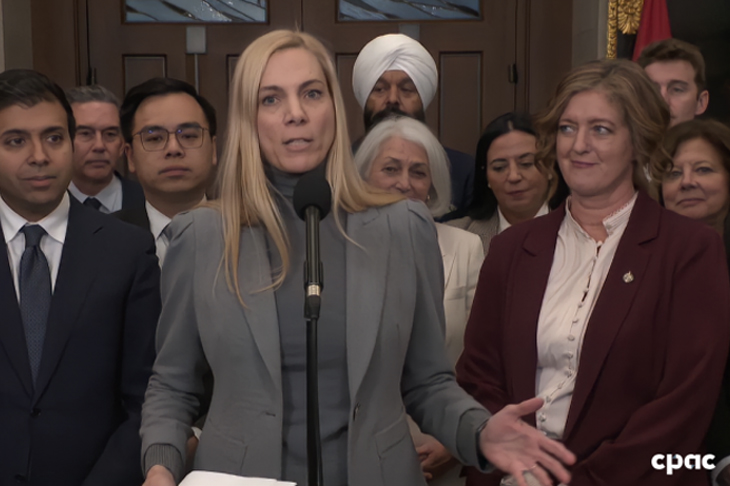By Greg O’Brien
OTTAWA – While one question was answered Wednesday, a few others have arisen surrounding the June 2021 auction of 3500 MHz wireless spectrum.
There was much speculation whether Shaw would take part in the auction, now that Rogers is buying the company, and on the list of qualified bidders released by Industry, Science and Economic Development Wednesday, Shaw is absent, so it’s officially out. As we reported, it probably would have been disqualified from bidding on set aside spectrum anyway, if it had taken part.
“This confirms Shaw is all in on the proposed deal with Rogers given they will miss out on mission-critical spectrum for 5G if the deal does not close,” wrote BMO Capital Markets telecom analyst Tim Casey in a note to investors.
What that means for the portion of 3500 MHz spectrum originally set aside to be bid on only by regional providers like Shaw, Videotron, Eastlink, Xplornet and others, is there is one deep-pocketed player on the sidelines while it and Rogers await decisions from three regulators (ISED, the CRTC and Competition Bureau) on its merger.
Somewhat helpfully, all three agencies appeared Wednesday afternoon at the Standing Committee on Industry, Science and Technology, which is quickly studying the Rogers/Shaw merger, and the ISED officials dropped a few nuggets about spectrum and the auction (and they sure didn’t say much about the proposed merger, because they can’t).
When asked by Windsor West MP Brian Masse how much of a challenge it will be to run the auction with Shaw out, ISED officials said they don’t see a problem right now. “We actually have 24 participants,” said Adam Scott, ISED’s director general, spectrum licensing policy branch. “This is 50% more participants than our previous spectrum auction (the 2019 600 MHZ auction), which tells me that a demand for spectrum and an interest in getting their hands on that spectrum, is alive and well.”
He also pointed to the fact ISED split the auction into smaller regional slices this time, meaning 172 licences are up for grabs, rather than 17 in the last auction (which brought in almost $3.5 billion from Canadian wireless companies) as reasons why there is additional interest this time around.
That said, the auction rules must be giving those in government some pause. Some (including us) speculated Quebecor might be able to gobble up set aside spectrum in Alberta, B.C. and Ontario, where Freedom Mobile is the fourth regional player – and also potentially be a Freedom buyer, should the regulators require Rogers to divest Shaw wireless assets.
Not so fast, however.
The auction rules don’t let just any independent bid on set aside spectrum anywhere they want. In order to bid on ISED’s so-called tier 4 spectrum licences, a bidder must already be operating in a “relevant tier 2” area. This means Quebecor couldn’t just bid on spectrum in British Columbia, unless it has telecom assets there we don’t know about.
“Eligibility to bid on set-aside spectrum will be limited to those registered with the CRTC as facilities-based providers that are not national mobile service providers, and that are actively providing commercial telecommunications services to the general public in the relevant Tier 2 service area of interest, effective as of the date of application to participate in the 3500 MHz auction. Services that are regulated under the Broadcasting Act will not be considered as ‘commercial telecommunications services’ for the purposes of set-aside eligibility, however all services that are regulated under the Telecommunications Act may qualify,” reads the auction rules.
So, since Videotron does peer at TORIX in downtown Toronto and ostensibly has its own fibre running there, that may well be enough to bid on set aside spectrum in the Greater Toronto Area, even though the only place it offers retail wireless service outside of Quebec now is in eastern Ontario.
Those rules could also mean Alberta might just be wide open for Eastlink to bid on set aside spectrum there since it has launched wireless services in Grande Prairie, where it also owns a cable system.
Of course, we can’t ask any of the companies about this, since they are strictly prohibited from talking about the auction.
The worry many observers now harbour is should the Rogers/Shaw merger proceed and Rogers is forced to divest Freedom Mobile, any buyer will be shut out of 5G, since mid-band 3500 MHz is the spectrum which will begin to deliver on the new wireless standard’s immense promise and Freedom will have none. Additional auctions of higher frequency spectrum will come soon, however.
At the committee on Wednesday, Éric Dagenais, ISED’s senior assistant deputy minister, spectrum and telecommunications, who was not responding to this particular question, also reminded the committee Rogers is not allowed to keep Freedom’s 600 MHz spectrum which was purchased under the 2019 auction rules which prohibit it from being sold to one of the Big Three inside five years of taking ownership.
And most early 5G in the market is right now riding on 600 MHz spectrum.









